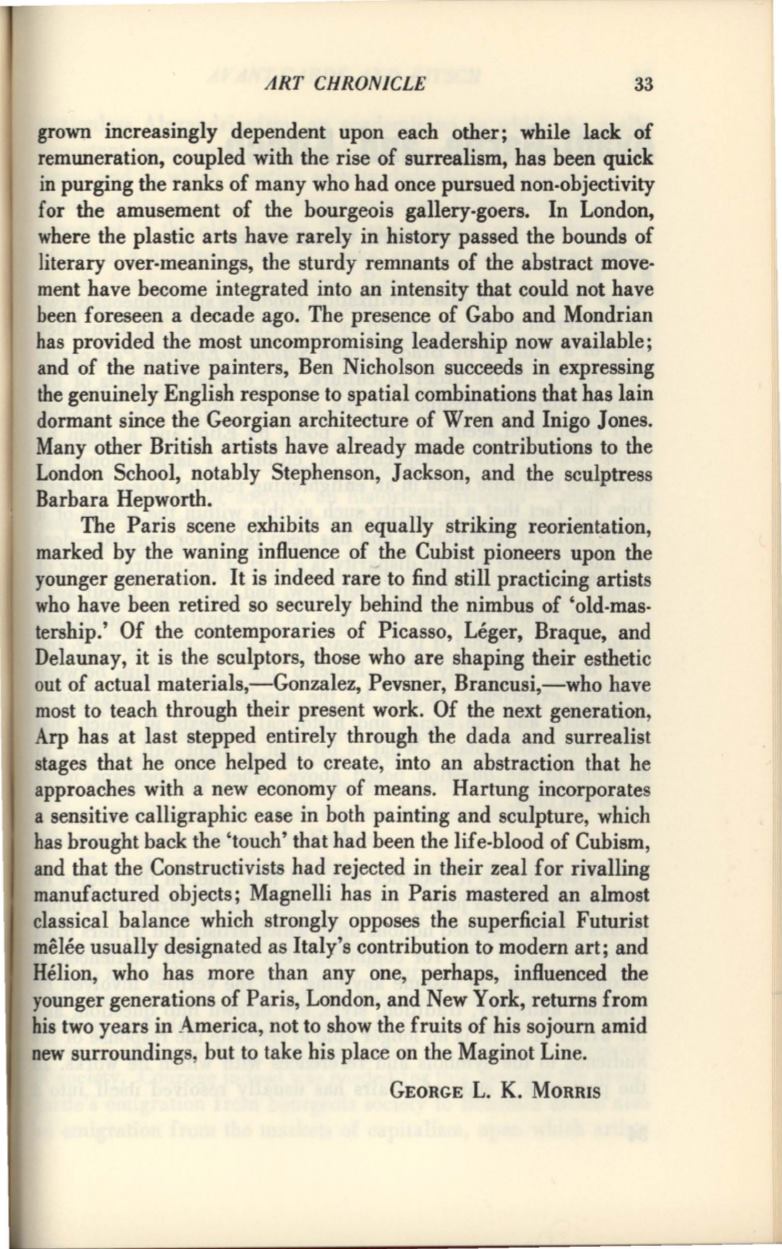
ART CHRONICLE
33
grown increasingly dependent upon each other; while lack of
remuneration, coupled with the rise of surrealism, has been quick
in purging the ranks of many who had once pursued non-objectivity
for the amusement of the bourgeois gallery-goers. In London,
where the plastic arts have rarely in history passed the bounds of
literary over-meanings, the sturdy remnants of the abstract move–
ment have become integrated into an intensity that could not have
been foreseen a decade ago. The presence of Gabo and Mondrian
has provided the most uncompromising leadership now available;
and of the native painters, Ben Nicholson succeeds in expressing
the genuinely English response to spatial combinations that has lain
dormant since the Georgian architecture of Wren and Inigo Jones.
Many other British artists have already made contributions to the
London School, notably Stephenson, Jackson, and the sculptress
Barbara Hepworth.
The Paris scene exhibits an equally striking reorientation,
marked by the waning influence of the Cubist pioneers upon the
younger generation. It is indeed rare to find still practicing artists
who have been retired so securely behind the nimbus of 'old-mas–
tership.' Of the contemporaries of Picasso, Leger, Braque, and
Delaunay, it is the sculptors, those who are shaping their esthetic
out of actual materials,-Gonzalez, Pevsner, Brancusi,-who have
most to teach through their present work. Of the next generation,
Arp
has at last stepped entirely through the dada and surrealist
stages that he once helped to create, into an abstraction that he
approaches with a new economy of means. Hartung incorporates
a sensitive calligraphic ease in both painting and sculpture, which
has brought back the 'touch' that had been the life-blood of Cubism,
and that the Constructivists had rejected in their zeal for rivalling
manufactured objects; Magnelli has in Paris mastered an almost
classical balance which strongly opposes the superficial Futurist
melee usually designated as Italy's contribution to modern art; and
Helion, who has more than any one, perhaps, influenced the
younger generations of Paris, London, and New York, returns from
his two years in America, not to show the fruits of his sojourn amid
new surroundings, but to take his place on the Maginot Line.
GEORGE
L.
K.
MORRIS


